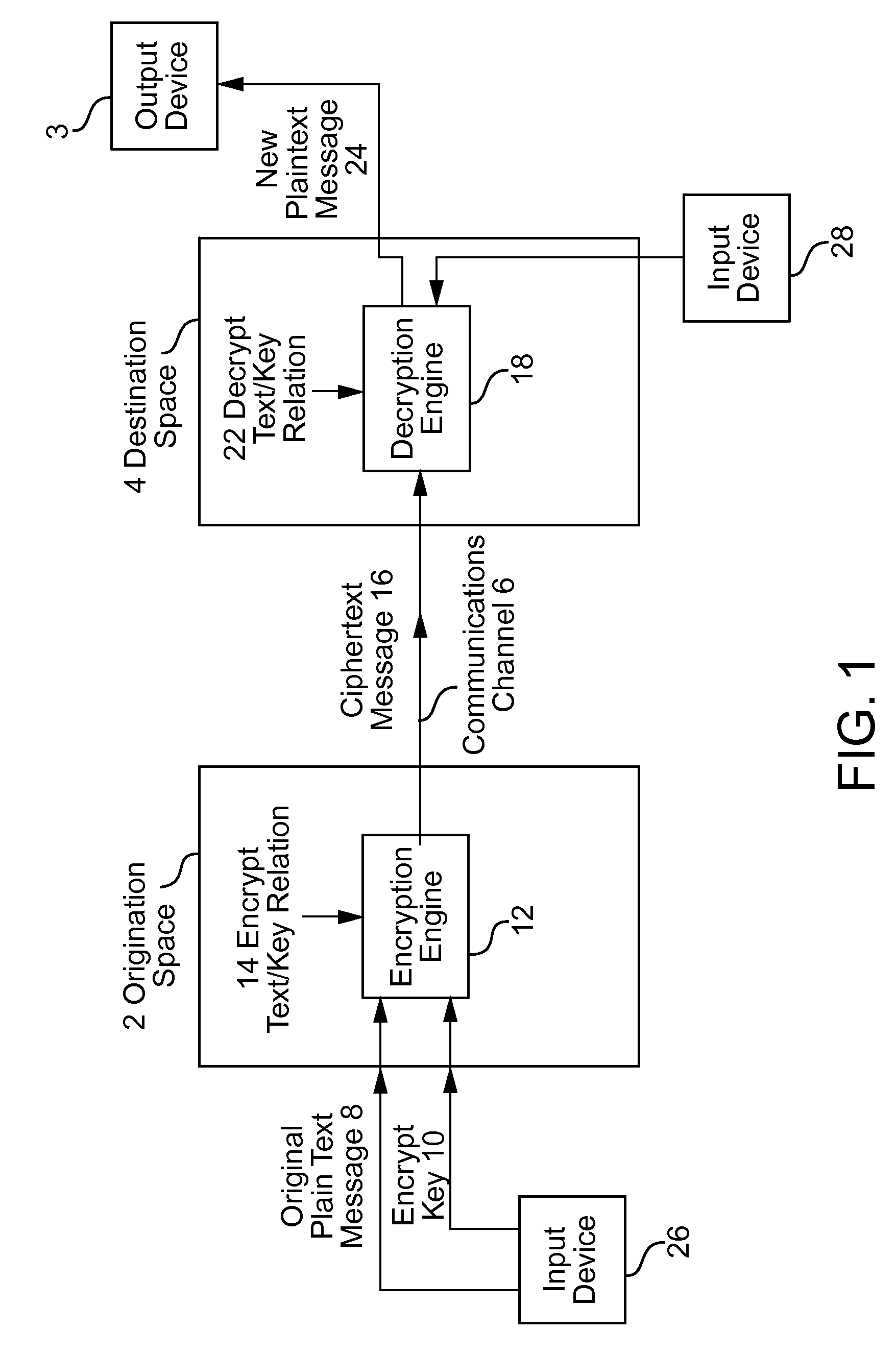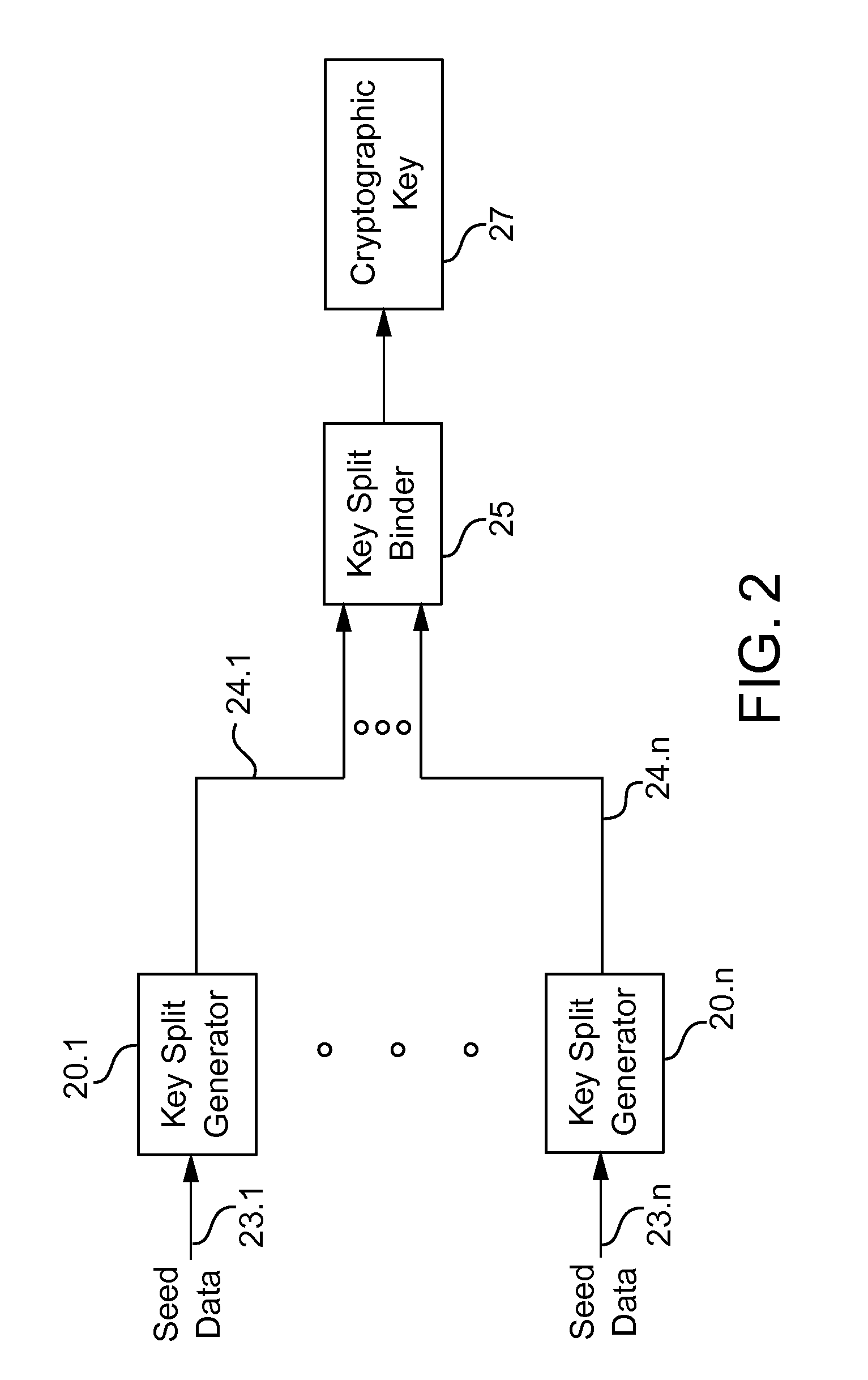Cryptographic key split binder for use with tagged data elements
a key and data element technology, applied in the field of cryptographic systems, can solve the problems of unintended and unauthorized recipients of electronic communications, message worthless to the interloper, and especially susceptible to such interception of wireless transmissions, and achieve the effect of adding the weight of encryption's enforcemen
- Summary
- Abstract
- Description
- Claims
- Application Information
AI Technical Summary
Benefits of technology
Problems solved by technology
Method used
Image
Examples
Embodiment Construction
[0048]Referring to FIG. 1, a communication has an origination space 2 and a destination space 4. The origination space 2 defines the place and time at which the communication originates. The destination space 4 defines the place and time at which the communication is intended to be accessed. The origination space 2 and the destination space 4 can be remote in location. Alternatively, they can be collocated but displaced in time. The space and time correspondence between the origination space 2 and the destination space 4 depends on the nature of a particular communication. The origination space 2 and destination space 4 are coupled to a common communications channel 6.
[0049]This communications channel 6 can bridge a physical space, such as empty air in the case of a cellular voice telephone call or wireless network connection. Alternatively, the communications channel 6 can be temporary storage for the communication while time passes between the origination space 2 and the destinati...
PUM
 Login to View More
Login to View More Abstract
Description
Claims
Application Information
 Login to View More
Login to View More - R&D
- Intellectual Property
- Life Sciences
- Materials
- Tech Scout
- Unparalleled Data Quality
- Higher Quality Content
- 60% Fewer Hallucinations
Browse by: Latest US Patents, China's latest patents, Technical Efficacy Thesaurus, Application Domain, Technology Topic, Popular Technical Reports.
© 2025 PatSnap. All rights reserved.Legal|Privacy policy|Modern Slavery Act Transparency Statement|Sitemap|About US| Contact US: help@patsnap.com



